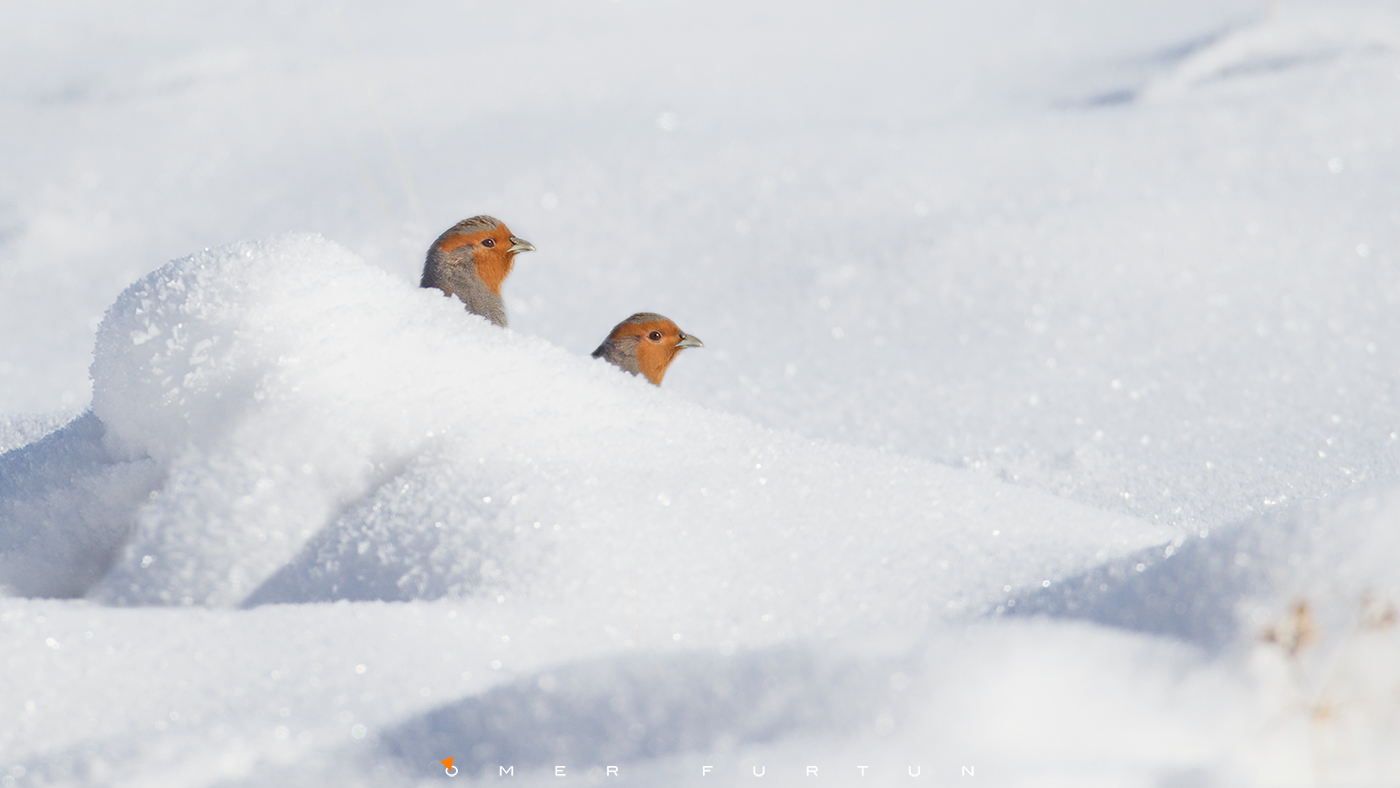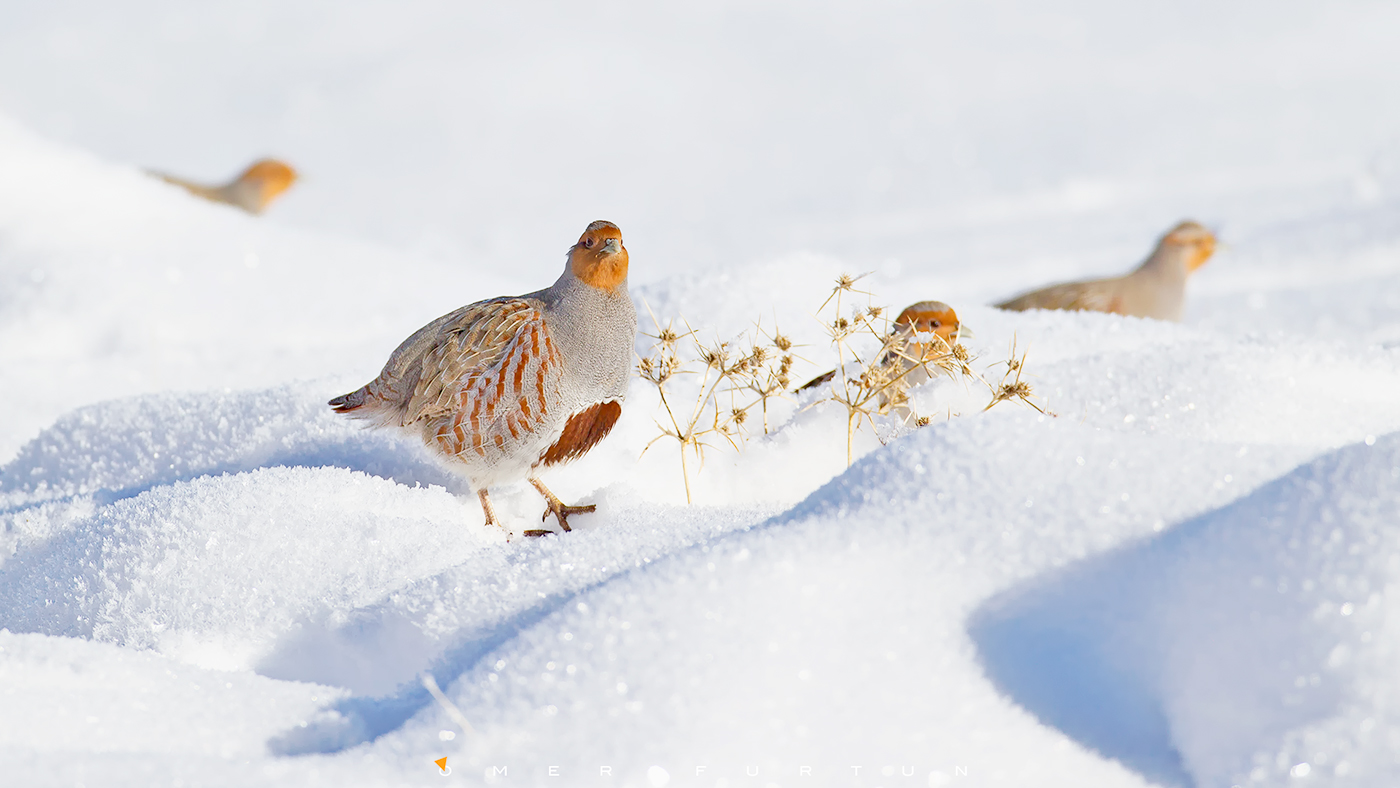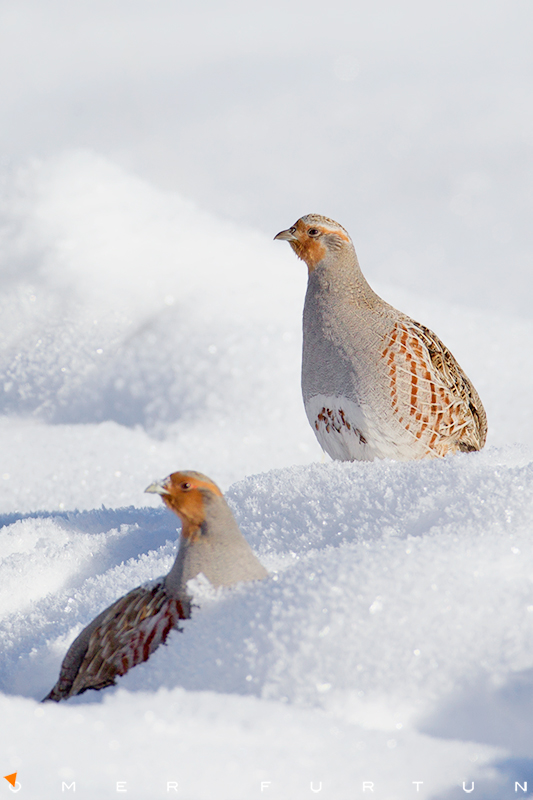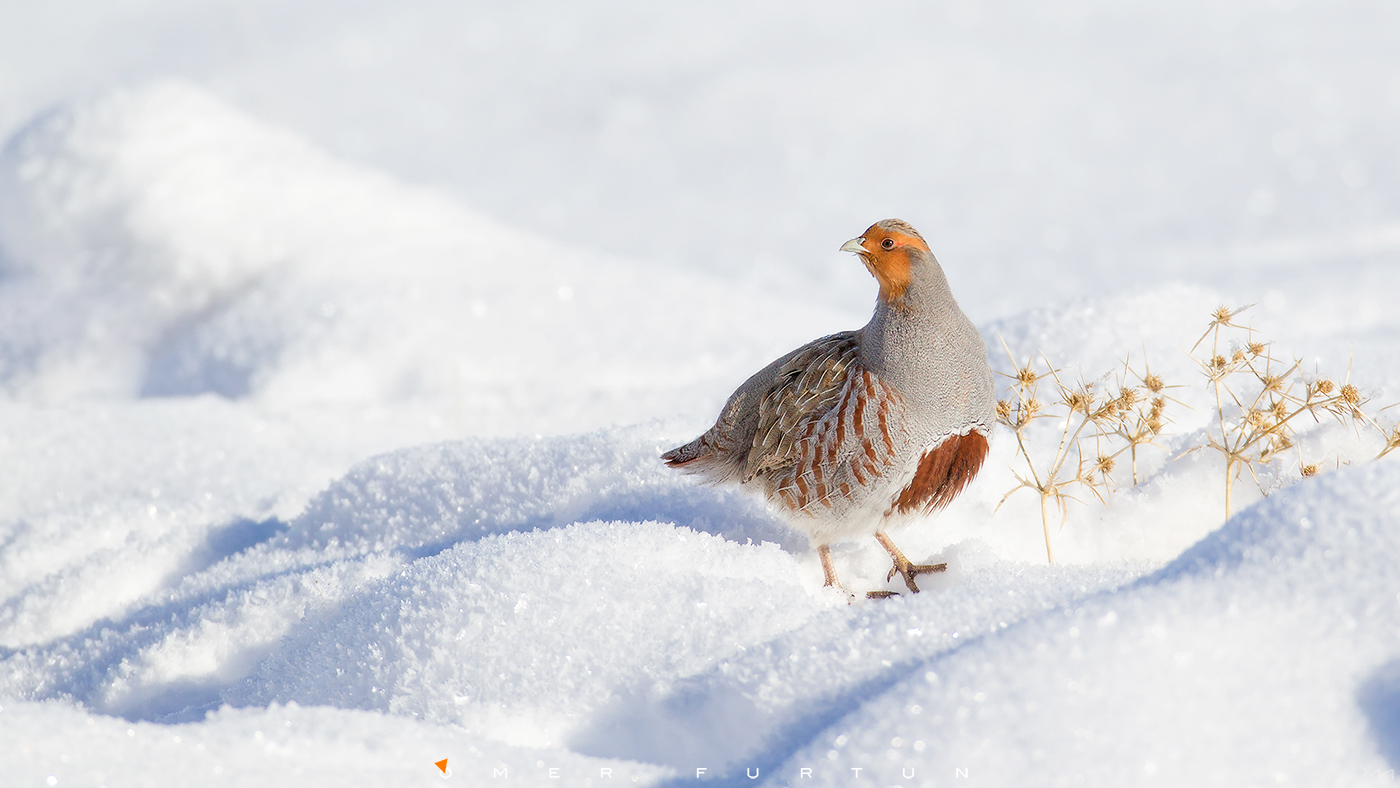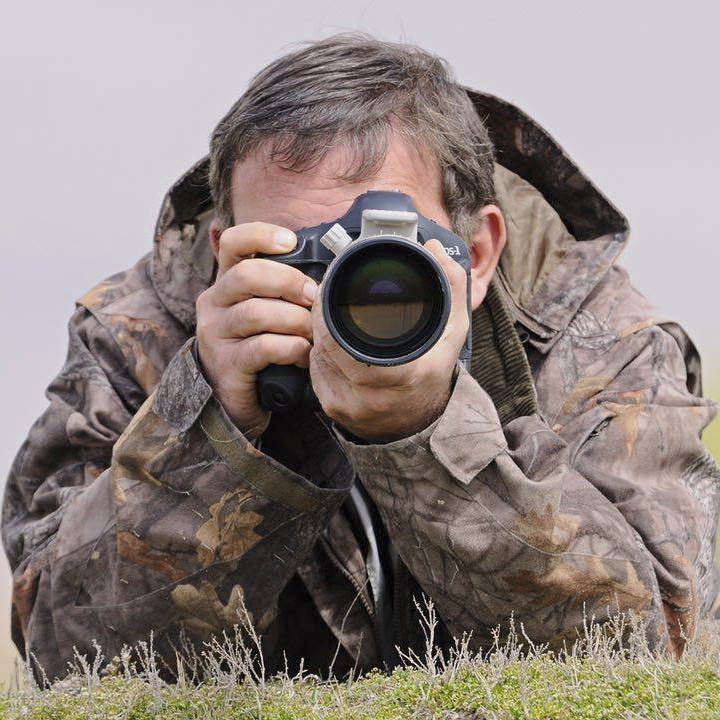Do Snowmen Bleed?
Midnight – 12:00 AM
On a snowy night, a covey of Grey Partridges huddles together at the base of a dense thicket, burrowing down to the soil beneath. Curled up in each other’s warmth, they brace against Ankara’s bitter cold.
A photographer checks his camera, memory cards, and batteries before setting his alarm: 5:00 AM.
A hunter finishes cleaning his rifle and loading his cartridges, then sets his alarm: 5:00 AM.
At exactly 5:00 AM, both of their phone alarms ring. As the screens light up, one displays a wallpaper of a Common Tern feeding its chicks, while the other shows a lineup of dead birds placed on a car hood. They both sit up in their beds. Knowing the infamous Ankara chill, they dress warmly.
As dawn breaks, the partridges cautiously emerge from the thicket, searching for food under the watchful eyes of their sentinels. The day ahead is harsh—snow blankets everything. When they sense danger, they first bury themselves in the snow to hide. If the threat is too close, they take flight, seeking shelter in places similar to the bushes where they spent the night.
Both the photographer and the hunter meet their friends at a bakery in Gölbaşı for a hearty breakfast before hopping into their cars and heading toward the hills between Gölbaşı and Haymana.
The Grey Partridges, long-time residents of Ankara’s steppes, begin spreading out in flocks. Today, some will face the camera, while others will face the gun.
Facing the Camera:
Spotting the partridges ahead on the roadside, the photographers watch as the birds bury themselves in the snow. They slowly approach, turn off the engine, and wait. After some time, feeling safe again, the partridges reemerge. The photographers capture their first shots.
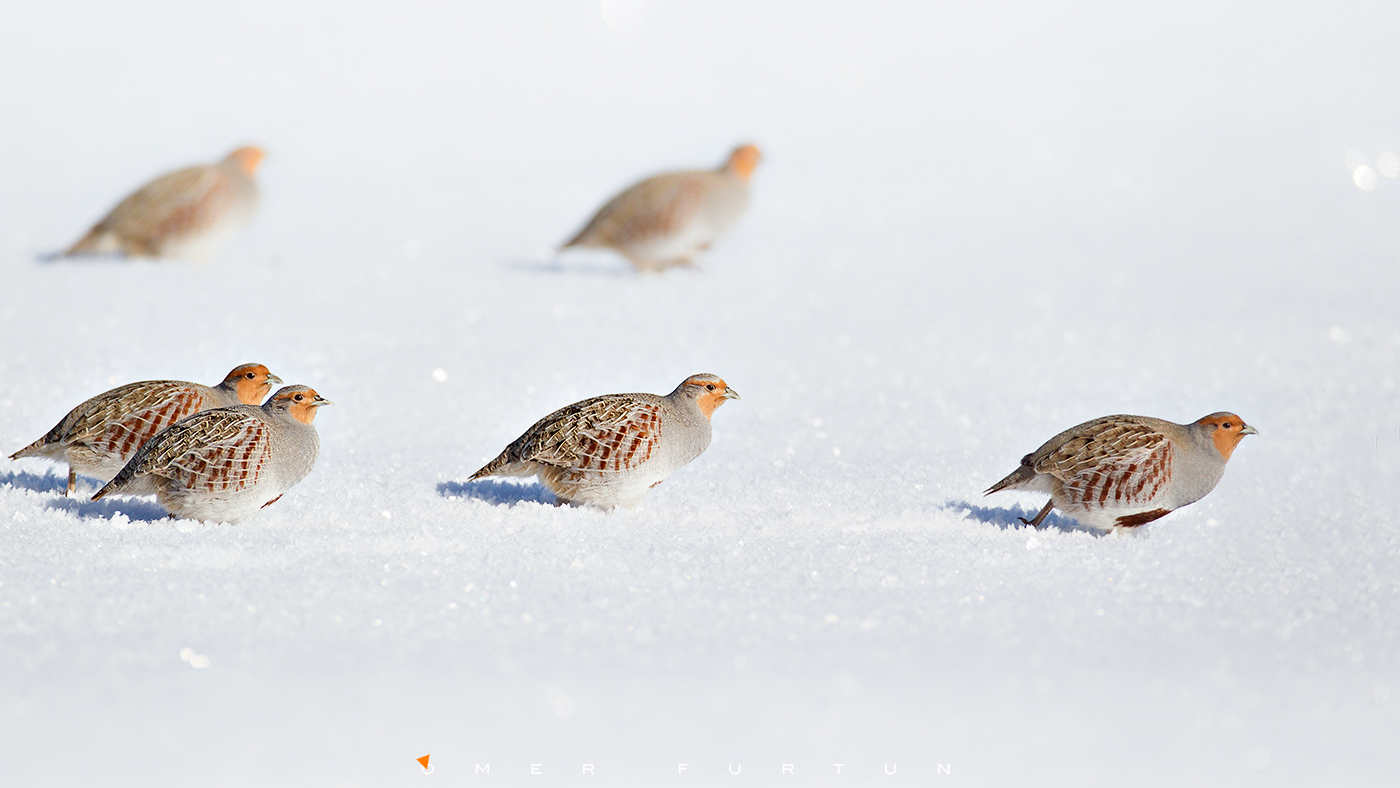
However, the leader of the flock decides that being this close to the car isn’t safe. Taking flight, he leads the entire group down the slope on the right side of the road. The photographers step out of the car and carefully observe. The birds land and hide at the base of the bushes below.
Thinking they could get better shots if they position themselves at a suitable distance from these bushes, the photographers begin walking downhill. They use a small hill as cover and, once they get close enough, lie down and wait.
Their patient vigil starts to pay off. Under the leader’s careful watch, the partridges gradually emerge from the bushes.
The leader is extremely cautious. Constantly alerting the others and making them retreat into cover, he is the only one visible in most shots. He knows exactly what’s happening; an escape plan is already in place. He begins guiding the flock toward the far side of a nearby hill.
As they move between the bushes and the small hill, they strike poses that delight the photographers. Finally, out of the photographers' line of sight, the flock regroups behind the hill. On the leader’s signal, they take off and vanish into the distance.
Facing the Gun:
The hunters spot the grey partridges flying downhill from the roadside in the distance. Carefully tracking their movement, they begin descending the slope toward the bushes where the birds have taken cover. Once they reach the flatland, they use a nearby hill as cover to get even closer.
As the flock slowly emerges from the bushes and moves toward the middle of the open field, the hunters step out from behind the hill. Startled by this sudden movement, the flock panics. Despite their leader’s warnings, they take to the sky—exactly what the hunters were hoping for.
A series of gunshots echo across the steppe. Four birds fall onto the snow-covered ground. The hunters walk over to collect the lifeless bodies, gently stroking their feathers and admiring their beauty. “Wow, just look at this,” one of them murmurs, pleased.
They continue walking in the direction the flock fled, throwing stones into the bushes to flush out more birds. Gunshots shatter the silence of the steppe.
Coming home:
When the photographer returns home, he hears cheerful voices coming from the kitchen. His children are sitting at the table with their mother, enjoying homemade cake and milk while chatting. He picks up his camera and joins them.
His eldest son has learned how to browse the photos on the camera. He quickly grabs it, flipping through the images and showing them to his mother and younger sibling. As they carefully examine the birds and snow in the pictures, the younger child looks up and asks:
“Dad, do birds play snowball?”
When the hunter arrives home, his children are outside with their mother, busy building a snowman near the gazebo. He takes the neatly arranged bundle of partridges from the car and walks over to them. Without a second thought, he tosses the birds onto the table beside the snowman.
He must have used the wrong type of ammunition—soon, the snow on the table starts turning red, a few drops of blood splattering onto the snowman.
One of the children quickly grabs a handful of fresh snow, carefully trying to cover the bloodstains. The younger looks up and asks:
“Dad, do snowmen bleed?”
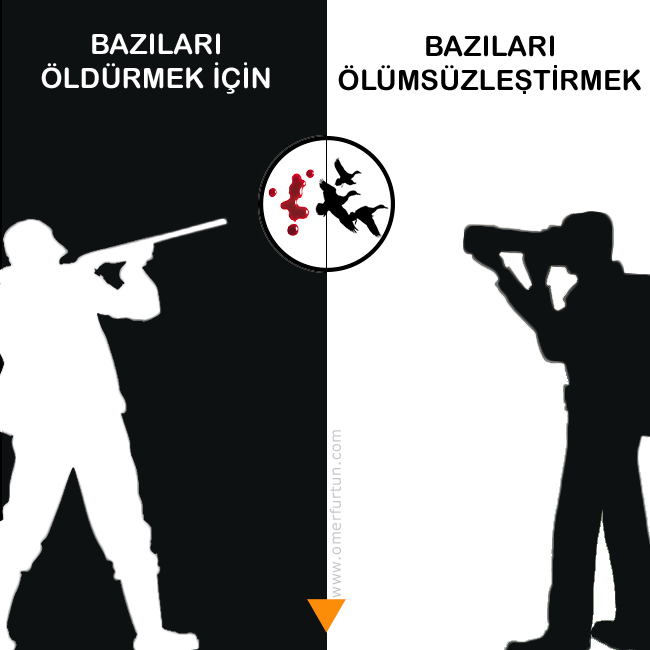
Note: Since I don't know much about hunting, there may be descriptions in the hunting sections of the story that are inaccurate in terms of hunting techniques. I tried to write it based on research, but since even reading about it is quite disturbing, I decided it wasn't that important.
One way or another, whether it's one or three...




